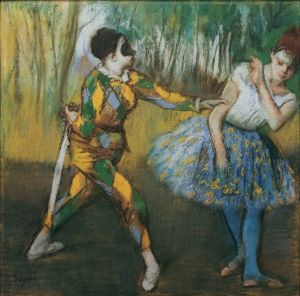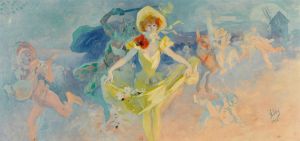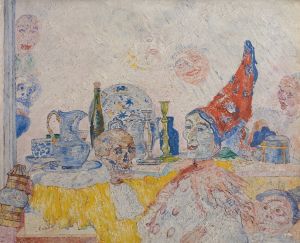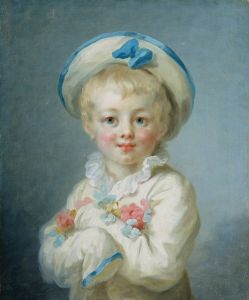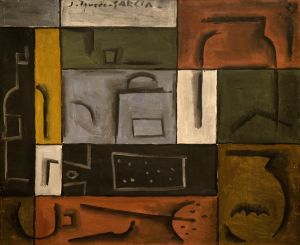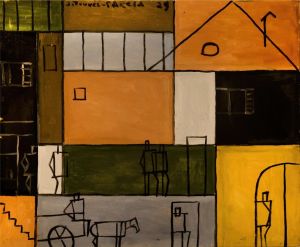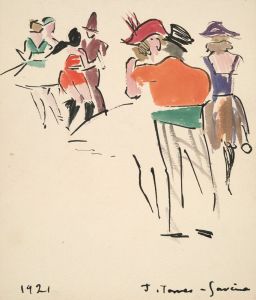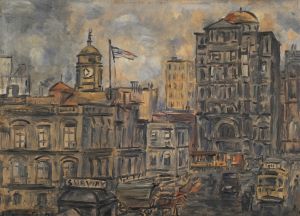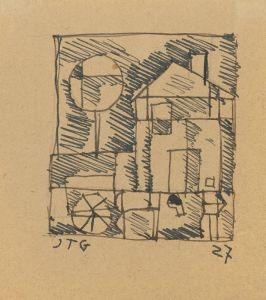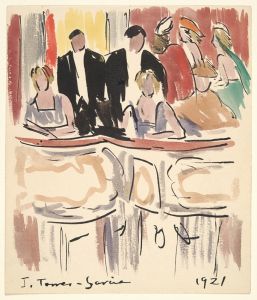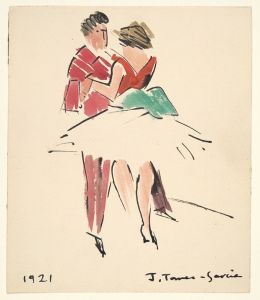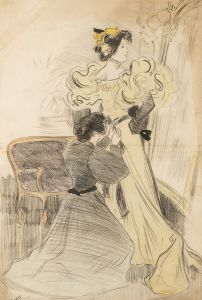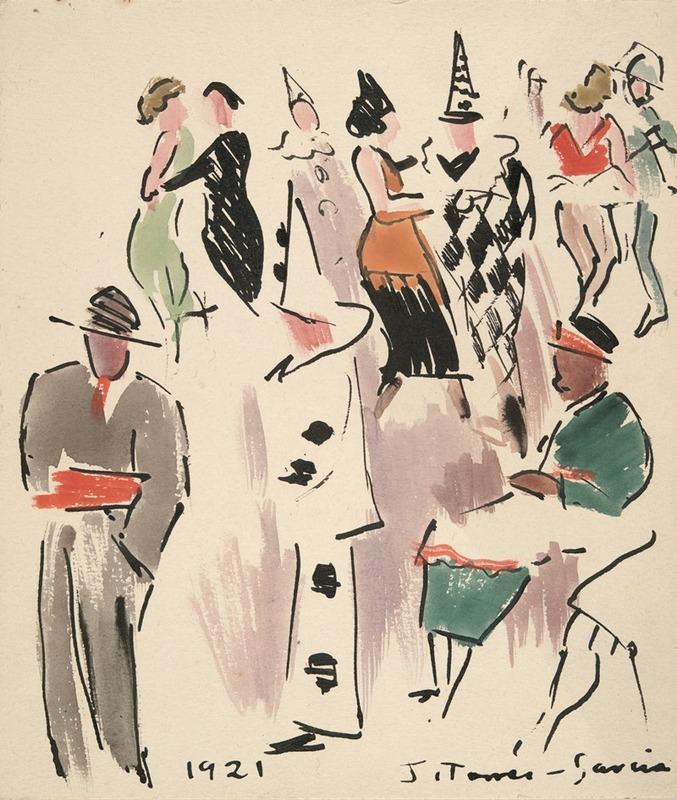
Artists’ Ball; Pierrot, Harlequin, and Dancers
A hand-painted replica of Joaquín Torres-García’s masterpiece Artists’ Ball; Pierrot, Harlequin, and Dancers, meticulously crafted by professional artists to capture the true essence of the original. Each piece is created with museum-quality canvas and rare mineral pigments, carefully painted by experienced artists with delicate brushstrokes and rich, layered colors to perfectly recreate the texture of the original artwork. Unlike machine-printed reproductions, this hand-painted version brings the painting to life, infused with the artist’s emotions and skill in every stroke. Whether for personal collection or home decoration, it instantly elevates the artistic atmosphere of any space.
Joaquín Torres-García was a prominent Uruguayan artist known for his contributions to modern art and his role in the development of Constructivism in Latin America. One of his notable works is "Artists’ Ball; Pierrot, Harlequin, and Dancers," which reflects his engagement with modernist themes and his unique artistic style.
Torres-García was born in Montevideo, Uruguay, in 1874 and spent much of his early career in Europe, particularly in Spain and France. His time in Europe exposed him to various avant-garde movements, including Cubism and Surrealism, which influenced his artistic development. He was also associated with the Catalan Noucentisme movement, which sought to renew and modernize Catalan culture.
"Artists’ Ball; Pierrot, Harlequin, and Dancers" is a painting that exemplifies Torres-García's interest in theatrical and carnival themes, which were popular among modernist artists of the early 20th century. The painting features characters such as Pierrot and Harlequin, who are traditional figures from the Commedia dell'arte, a form of theater that originated in Italy and became popular across Europe. These characters were often used by artists to explore themes of identity, performance, and the blurring of reality and illusion.
In this work, Torres-García employs a vibrant color palette and dynamic composition to capture the lively and festive atmosphere of an artists' ball. The figures are depicted in a stylized manner, with geometric forms and bold outlines that reflect his interest in abstraction and constructivist principles. The use of flat planes of color and simplified shapes is characteristic of Torres-García's mature style, which sought to balance representation with abstraction.
Torres-García's work is often associated with his development of a unique visual language known as "Universal Constructivism." This approach combined elements of European modernism with pre-Columbian art and symbols, aiming to create a universal artistic language that transcended cultural boundaries. While "Artists’ Ball; Pierrot, Harlequin, and Dancers" may not explicitly incorporate pre-Columbian motifs, it demonstrates his broader interest in synthesizing different artistic traditions.
Throughout his career, Torres-García was also an influential teacher and theorist. He founded the "Taller Torres-García" (Torres-García Workshop) in Montevideo, where he mentored a generation of Latin American artists and promoted his constructivist ideas. His writings and teachings emphasized the importance of structure, order, and the integration of art into everyday life.
"Artists’ Ball; Pierrot, Harlequin, and Dancers" is a testament to Torres-García's ability to blend traditional themes with modernist techniques, creating works that are both visually engaging and intellectually stimulating. His legacy continues to be celebrated in Uruguay and internationally, as his contributions to modern art have left a lasting impact on the development of 20th-century art movements.
In summary, Joaquín Torres-García's "Artists’ Ball; Pierrot, Harlequin, and Dancers" is a significant work that reflects his engagement with modernist themes and his unique artistic vision. Through its vibrant depiction of theatrical characters and its use of abstraction, the painting exemplifies Torres-García's innovative approach to art and his enduring influence on the art world.






